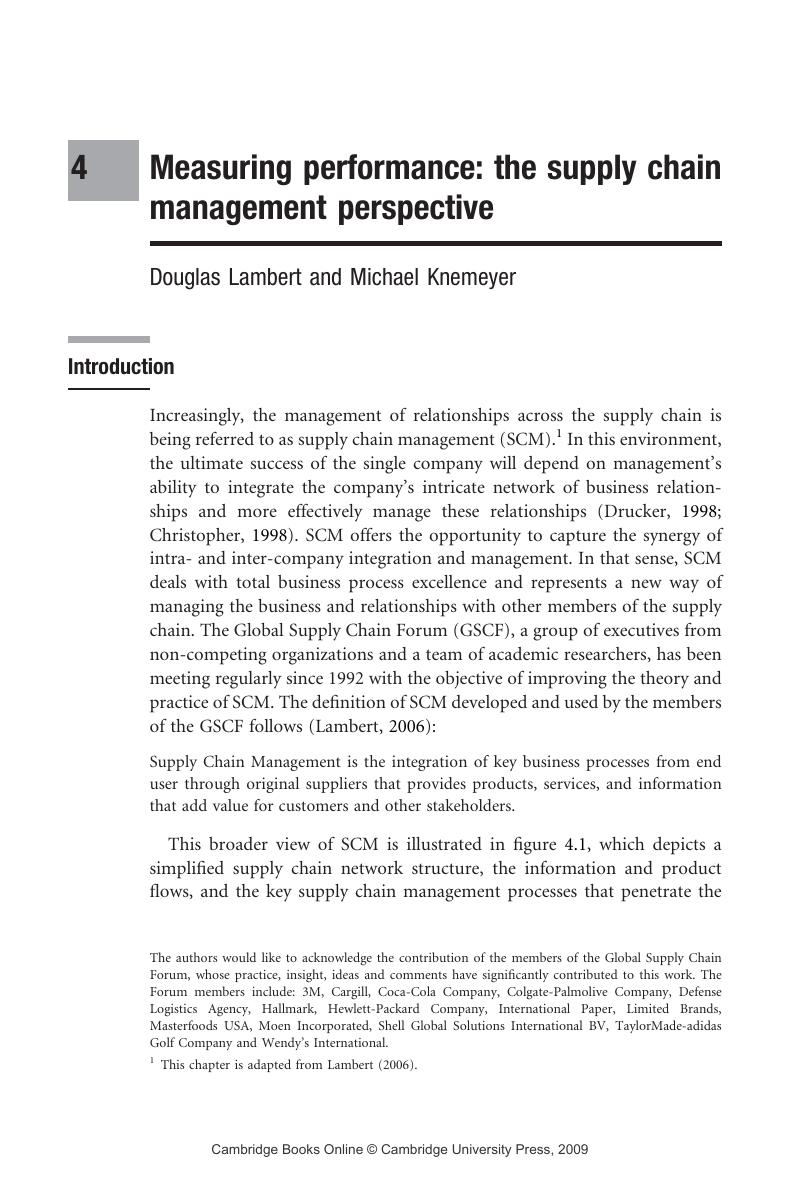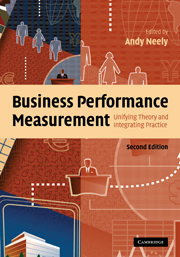Book contents
- Frontmatter
- Contents
- List of figures
- List of tables
- List of boxes
- List of contributors
- Introduction
- Part I Performance measurement – functional analyses and theoretical foundations
- 1 Accounting performance measurement: a review of its purposes and practices
- 2 Measuring marketing performance: research, practice and challenges
- 3 Measuring performance: the operations management perspective
- 4 Measuring performance: the supply chain management perspective
- 5 Finding performance: the new discipline in management
- 6 A conceptual and operational delineation of performance
- Part II Performance measurement – frameworks and methodologies
- Part III Performance measurement – practicalities and challenges
- Part IV Performance measurement in public services
- Part V Performance measurement – emerging issues and enduring questions
- Index
- References
4 - Measuring performance: the supply chain management perspective
Published online by Cambridge University Press: 22 September 2009
- Frontmatter
- Contents
- List of figures
- List of tables
- List of boxes
- List of contributors
- Introduction
- Part I Performance measurement – functional analyses and theoretical foundations
- 1 Accounting performance measurement: a review of its purposes and practices
- 2 Measuring marketing performance: research, practice and challenges
- 3 Measuring performance: the operations management perspective
- 4 Measuring performance: the supply chain management perspective
- 5 Finding performance: the new discipline in management
- 6 A conceptual and operational delineation of performance
- Part II Performance measurement – frameworks and methodologies
- Part III Performance measurement – practicalities and challenges
- Part IV Performance measurement in public services
- Part V Performance measurement – emerging issues and enduring questions
- Index
- References
Summary

- Type
- Chapter
- Information
- Business Performance MeasurementUnifying Theory and Integrating Practice, pp. 82 - 112Publisher: Cambridge University PressPrint publication year: 2007



